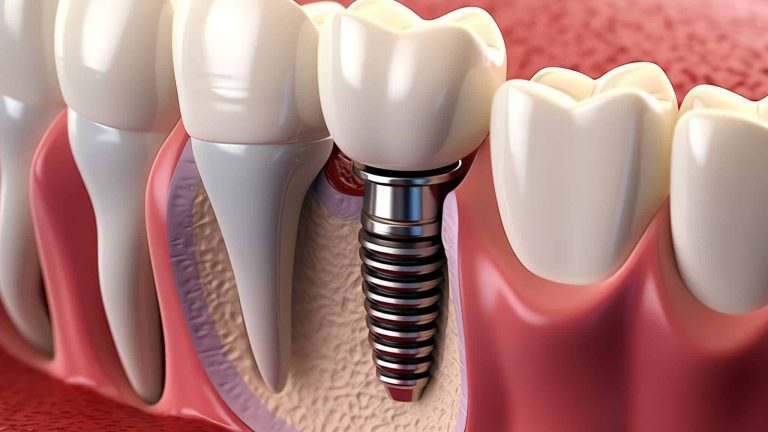When most people think of orthodontics, the first thing that comes to mind is a perfect smile. While orthodontics can transform the aesthetic appearance of teeth, the benefits go far beyond the visual. Orthodontics is not just about aligning teeth and creating an attractive smile; it also has a profound impact on oral health and overall well-being.
In this article, we will explore how orthodontics can significantly improve oral health. We will review how correcting issues such as misalignment, improper bite, or crowding not only transforms your smile but also prevents and treats a range of oral health problems that could worsen over time if left untreated. We will also discuss how these treatments positively impact jaw function, oral hygiene, disease prevention, and overall quality of life.
1. What Is Orthodontics?
Before discussing the benefits for oral health, it’s important to understand what orthodontics is and why it’s an essential part of dentistry. Orthodontics is the dental specialty that focuses on the correction of misaligned teeth and jaws. An orthodontist uses various types of dental appliances, such as braces, invisible aligners, or orthopedic devices, to gradually move teeth into their proper position and improve the patient’s bite.
Common orthodontic issues that are treated include:
- Dental crowding: When teeth are too close together or don’t have enough space in the jaw.
- Diastemas: Excessive spaces between teeth.
- Crossbite: Occurs when one or more upper teeth don’t properly align with the lower teeth.
- Overbite: When the upper teeth excessively cover the lower teeth.
- Underbite: Occurs when the lower teeth protrude more than the upper teeth.
These issues not only affect the appearance of the smile but can also lead to long-term oral health complications. This is where orthodontics plays a crucial role.
2. Improved Chewing and Digestive Function
One of the main benefits of orthodontics, often overlooked, is the improvement in chewing function. When teeth are not properly aligned, it can be difficult to chew food adequately. This not only affects the efficiency of breaking down food but can also lead to digestive problems.
2.1. Efficient Chewing
A correct bite ensures that food is properly chewed before being swallowed. When teeth are misaligned or the bite is incorrect, certain teeth may be under more pressure than others, not only wearing down teeth unevenly but also making it difficult to chew food evenly.
For example, if you suffer from an overbite or underbite, your front or lower teeth may not make adequate contact to cut food, forcing the molars to take on more load. This can lead to overloading the back teeth and cause premature wear.
2.2. Improved Digestion
The digestive process begins in the mouth. Saliva and chewing prepare food for digestion in the stomach and intestines. When food is not chewed properly due to dental misalignment, the digestive process can become less efficient. This can lead to problems like indigestion and other digestive disorders. By improving teeth alignment through orthodontics, more efficient chewing is promoted, which in turn facilitates better digestion and nutrient absorption.
3. Improved Oral Hygiene
One of the main challenges of misaligned or crowded teeth is that they are difficult to clean properly. Teeth that are not aligned create spaces that are hard to reach with a toothbrush or dental floss, increasing the risk of developing plaque, cavities, and periodontal disease.
3.1. Easier Access for Cleaning
When teeth are correctly aligned, it is much easier to brush and floss effectively. Tooth surfaces are more accessible, allowing plaque and food debris to be removed more efficiently. This reduces the risk of developing issues like tooth decay and gingivitis.
On the other hand, crowded or crooked teeth tend to accumulate more plaque in hard-to-reach spaces. If not removed, plaque can harden into tartar, increasing the chances of developing more serious problems like periodontal disease.
3.2. Prevention of Periodontal Disease
Periodontal disease (also known as gum disease) is one of the leading causes of tooth loss in adults. Misaligned teeth increase the risk of developing this disease, as bacteria accumulate more easily in hard-to-reach areas.
Orthodontics can help prevent periodontal disease by making it easier to clean teeth and gums daily. Additionally, when teeth are properly aligned, the gums fit better around the teeth, creating a more effective natural barrier against bacteria.
4. Prevention of Tooth Wear
Misaligned teeth, especially those that don’t fit together properly when biting, can suffer from uneven wear over time. This wear not only affects the appearance of the teeth but can also lead to more serious problems such as tooth sensitivity, fractures, or even tooth loss.
4.1. Excessive Wear
When teeth are not properly aligned, certain areas may be under more pressure than others. This can cause excessive wear on the teeth that bear most of the chewing load. Teeth that wear down unevenly lose their protective enamel, making them more susceptible to tooth sensitivity and decay.
For example, patients with a pronounced overbite may experience excessive wear on their front teeth, while those with a crossbite may prematurely wear down their back teeth.
4.2. Reduced Jaw Tension
In addition to tooth wear, misalignment can cause overloading of the jaw. This can lead to jaw pain, temporomandibular joint (TMJ) pain, and frequent headaches. By correcting dental alignment, the pressure is distributed more evenly during chewing, reducing tension in the muscles and jaw.
5. Improved Gum Health
Gum health is essential to maintaining healthy teeth and supporting structures. Misaligned or crowded teeth can endanger gum health, as they create areas where bacteria and food debris accumulate.
5.1. Healthier Gums
When teeth are properly aligned, the gums can fit more naturally around the teeth. This not only improves the appearance of the smile but also reduces the likelihood of developing gum inflammation or gingivitis.
5.2. Reduction of Gum Recession
Gum recession is a common problem that occurs when the gum tissue wears away or recedes, exposing more of the tooth root. This can be due to dental misalignment, which causes uneven pressure on the gums, causing them to recede over time.
Orthodontics can help prevent gum recession by correcting dental alignment, allowing better pressure distribution on the gums and reducing the risk of them receding.
6. Reduced Risk of Dental Injuries
When teeth protrude or are misaligned, they are more likely to fracture or chip due to trauma or accidents. Protruding teeth, for example, are more vulnerable to direct hits. By correcting the alignment of teeth through orthodontics, the risk of them being injured in the event of impact is reduced.
6.1. Protecting Teeth During Sports
Orthodontics also plays an important role in protecting teeth during contact sports. If you have an incorrect bite or misaligned teeth, you may be more exposed to dental injuries during physical activity. Many patients who play sports also opt for orthodontic mouthguards to protect both teeth and braces.
7. Improved Temporomandibular Joint (TMJ) Health
The temporomandibular joint (TMJ) is the hinge that connects the jaw to the skull and is responsible for jaw movements when chewing, talking, and swallowing. When teeth are misaligned, they can put pressure on the TMJ, causing a range of problems, including jaw pain, headaches, and difficulty opening and closing the mouth properly.
7.1. Correction of TMJ Problems
Orthodontics can help correct TMJ-related problems by properly aligning the teeth and jaws, reducing pressure on the joint. By improving alignment, symptoms such as chronic jaw pain and tension headaches can be relieved.
7.2. Prevention of Future Problems
Even if you are not currently experiencing TMJ problems, misaligned teeth can increase the risk of developing joint issues as you age. By correcting dental alignment with orthodontics, you can prevent these problems before they become a chronic nuisance.
8. Impact on Self-Esteem and Confidence
While this benefit has an aesthetic component, the psychological impact of an aligned and healthy smile should not be underestimated. Many people with crooked or misaligned teeth may feel self-conscious about smiling or speaking in public, affecting their self-esteem and confidence.
8.1. Improved Personal Confidence
A straight, well-aligned smile can transform how a person feels about themselves. Studies have shown that a healthy and attractive smile is linked to higher levels of personal confidence and emotional well-being. People who feel confident about their smile tend to have better social interactions and greater satisfaction in their personal and professional lives.
9. When Is the Right Time to Consider Orthodontics?
Orthodontics can be effective at any age, but the right time to start treatment depends on each patient’s individual needs. In general, it is recommended that children see an orthodontist around age 7 to assess the development of permanent teeth and the jaw structure.
However, many adults can also benefit from orthodontics, especially if they have dental alignment problems that are affecting their oral health or quality of life. With advancements in orthodontic technology, such as invisible aligners and lingual braces, adults can undergo treatment without the aesthetic discomfort often associated with traditional braces.
Conclusion
Orthodontics offers many benefits that go beyond a beautiful smile. By correcting issues such as dental crowding, improper bite, or crooked teeth, you can significantly improve your oral health and prevent a range of problems, such as cavities, gum disease, tooth wear, and TMJ disorders.
If you are considering orthodontics not only for aesthetic reasons but also for your oral health, Clínicas La Guardia is here to help. Our team of orthodontic experts is ready to offer you a personalized evaluation and guide you through every step of the process, ensuring a healthier, more functional, and confident smile.



